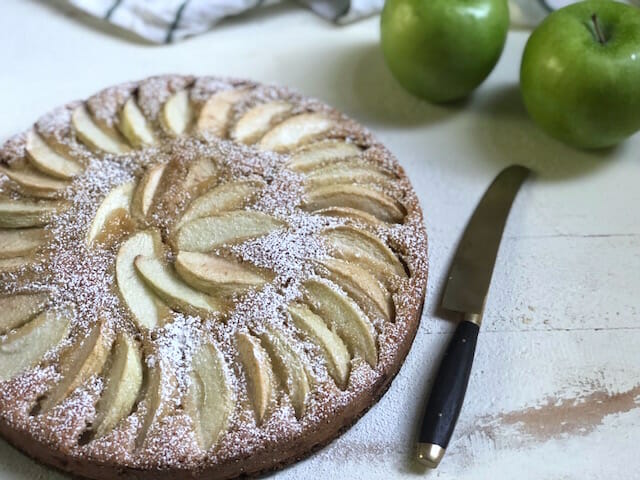It was a year ago today that we took off for several weeks on a trip that included a few adventures. Among them was booking our family into Fontana del Papa, a bed and breakfast that doubles as a cooking school in the countryside an hour north of Rome.
I was a little worried taking up two precious days of our holiday for a selfish little cooking side-trip. This was clearly for me more than anyone else. Plus, I was uncertain about the suitability of the place for kids, and knew nothing about it beyond a few photos viewed over the internet.
But two days of learning to cook Roman food in a rustic Italian setting? It was worth the risk. Every morning and afternoon, a bell rang calling us to the kitchen. It was time to cook.
The first day, we ambled down, coaxing our reluctant trio of girls along. After that, the kids were the first to come running; eager to cook alongside Mathilda, our wonderful teacher who spoke no English but was terrific with emotive hand gestures and encouraging smiles.
We loved it so much, we booked a third night.
I hadn’t given much thought to the desserts we might bake, more focused on the simple pastas of the region. In fact, I’d never much cared for Italian sweets, thinking there wasn’t much to them beyond cannoli and amaretti cookies.
But that first class, Mathilda set us to work on this Torta di Mele, which I’m calling Rustic Italian Apple Cake, and my bias was corrected. We ate it after dinner that night and for the two breakfasts to follow.
This cake has basic ingredients and a simple technique, yet the results of this Italian Apple Cake will make you look like a professional. That’s my kind of baking.
It’s a mildly sweet, sturdy cake, studded with tangy apples that seems to get better on day two or three. It’s the perfect sort of dessert to bring to a potluck or serve as part of a brunch. In summer, I’ll try it with “just ripe” plums or nectarines
Rustic Italian Apple Cake
This is a very simple cake that isn't too sweet. It's excellent for dessert, in the afternoon with a cup of tea, or even for brunch. The cake is made in a 9-inch spring form pan. You can also use a 10-inch pan if you increase recipe by 50 percent and expect it will take a bit longer to cook. Serve it plain or with freshly whipped cream or lightly sweetened Greek Yogurt.
Ingredients
- Butter and flour for dusting the pan
- 3 Granny Smith apples
- 2 eggs
- 1/2 cup extra-virgin olive oil (or canola oil)
- 2 tablespoons Sambuca (see Notes)
- 1 cup whole-wheat pastry flour
- 1/2 cup plus 3 tablespoons sugar
- 1 heaping teaspoon baking powder
- Confectioners' sugar to finish; whipped cream or Greek yogurt for serving
Instructions
-
Preheat oven to 325 degrees.
-
Coat a 9-inch spring form pan generously with butter. Lightly dust with flour.
-
Peel and core the apples. Slice into ¼-inch-thick wedges. Set aside.
-
Crack the eggs into a medium bowl. Add the oil and whisk together until one even consistency. Add the Sambuca, flour, sugar, and baking powder, and whisk until smooth.
-
Pour the batter into the prepared pan. Set the apples in the batter in a circle around the edge of the pan, overlapping slightly. Gently press the apples into the batter. Lay an inside circle of apples into the batter as you did the first.
-
Bake until the cake is golden brown and a knife inserted into the center comes out clean, 50 to 60 minutes.
-
Let cool for at least 30 minutes.
-
Remove the outside of the spring form pan. Lightly dust the top of the cake with confectioners' sugar, if desired. Serve in wedges with whipped cream or Greek yogurt.
Recipe Notes
Sambuca is an Italian liqueur that adds a wonderful anise flavor to this cake, so it's worth seeking out. If you don't have it, substitute 2 tablespoons fresh orange juice plus 1 teaspoon vanilla extract. It lends a pleasant, albeit different, sort of flavor.
Reprinted with permission from Fontana del Papa
